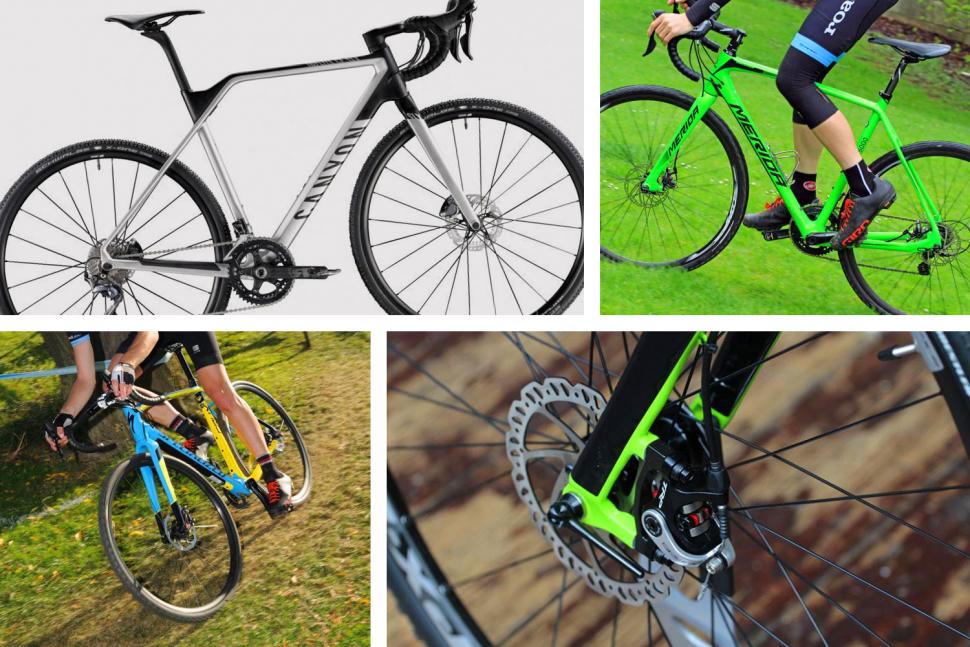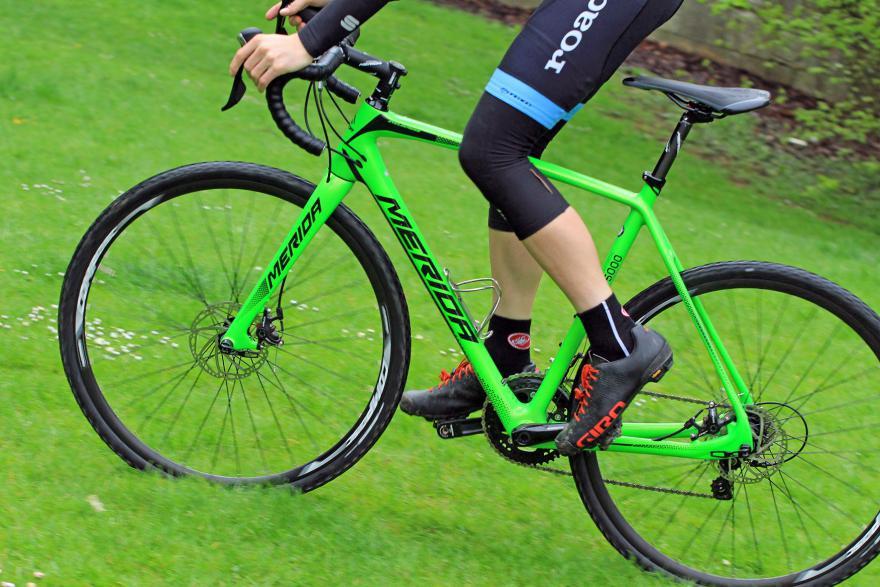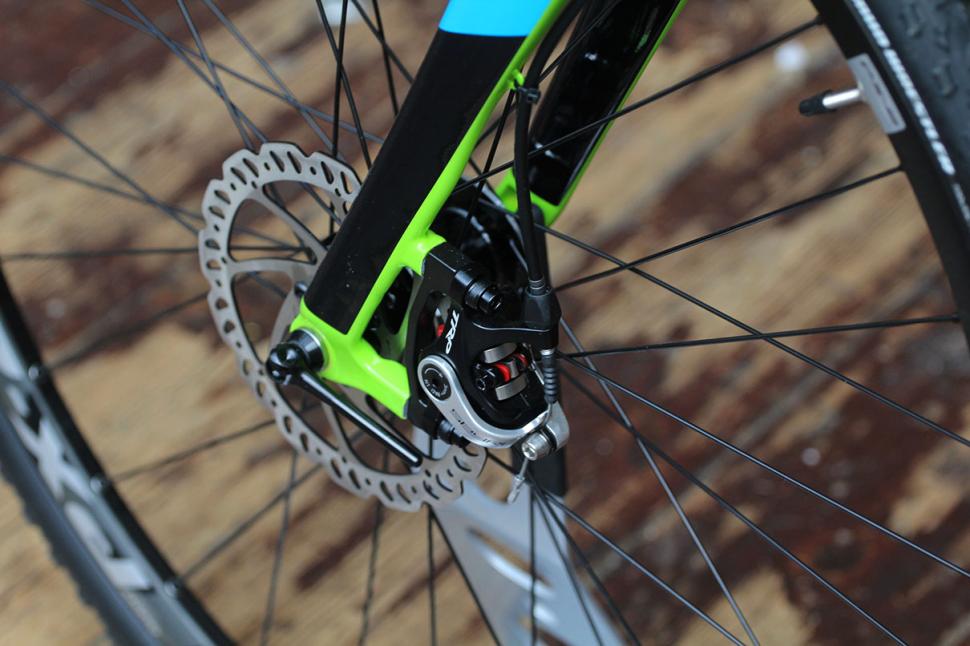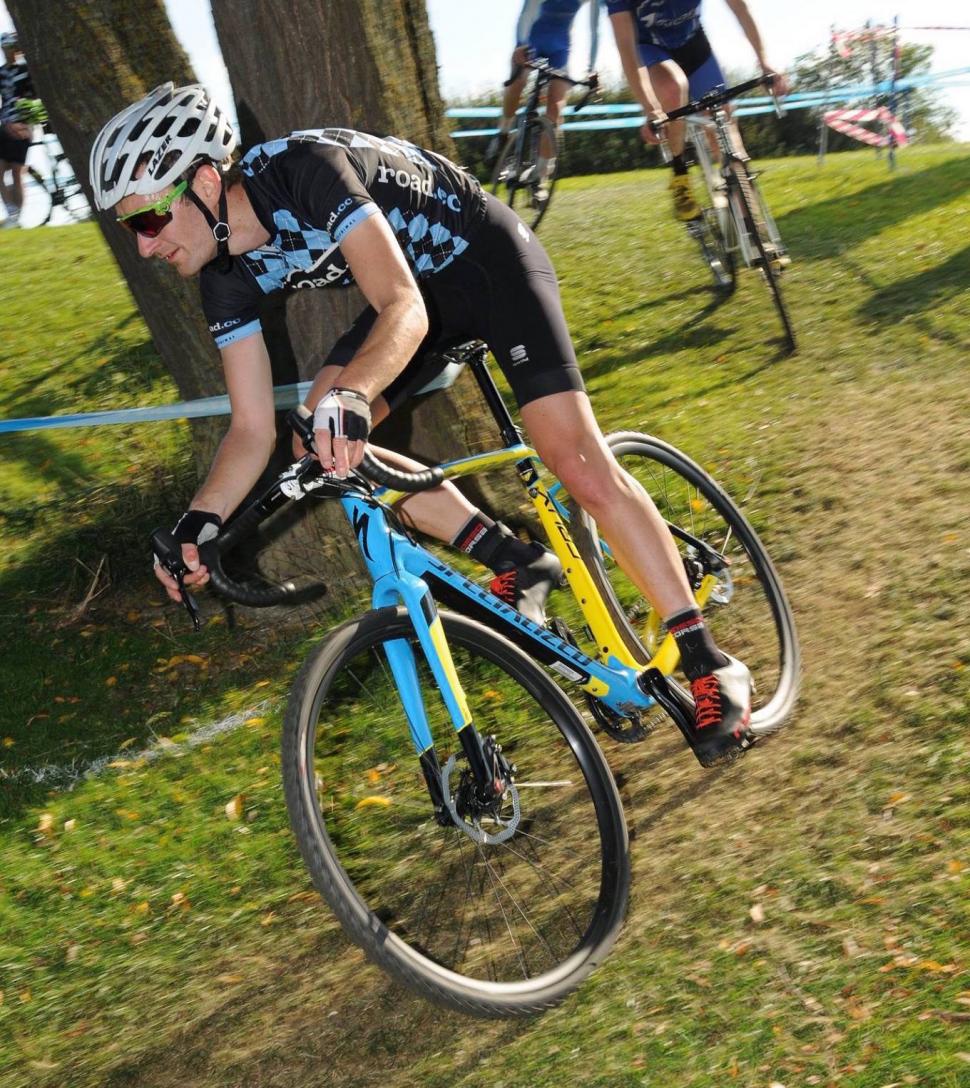- News
- Reviews
- Bikes
- Components
- Bar tape & grips
- Bottom brackets
- Brake & gear cables
- Brake & STI levers
- Brake pads & spares
- Brakes
- Cassettes & freewheels
- Chains
- Chainsets & chainrings
- Derailleurs - front
- Derailleurs - rear
- Forks
- Gear levers & shifters
- Groupsets
- Handlebars & extensions
- Headsets
- Hubs
- Inner tubes
- Pedals
- Quick releases & skewers
- Saddles
- Seatposts
- Stems
- Wheels
- Tyres
- Tubeless valves
- Accessories
- Accessories - misc
- Computer mounts
- Bags
- Bar ends
- Bike bags & cases
- Bottle cages
- Bottles
- Cameras
- Car racks
- Child seats
- Computers
- Glasses
- GPS units
- Helmets
- Lights - front
- Lights - rear
- Lights - sets
- Locks
- Mirrors
- Mudguards
- Racks
- Pumps & CO2 inflators
- Puncture kits
- Reflectives
- Smart watches
- Stands and racks
- Trailers
- Clothing
- Health, fitness and nutrition
- Tools and workshop
- Miscellaneous
- Buyers Guides
- Features
- Forum
- Recommends
- Podcast
feature
 Your guide to cyclocross racing Sept 2018
Your guide to cyclocross racing Sept 2018Complete guide to cyclocross - get into the muddiest racing
It's fast, frantic, spectator friendly and damn good fun. Cyclocross - or cross, cyclo-x and CX - is a sport that takes modified road bikes off road in races that typically last for 60 minutes and includes obstacles where you need to dismount and run with the bike over your shoulder.
Cyclocross racing was born at the turn of the last century when road racers took their bikes off-road through fields, down muddy paths and over fences as a way to keep in shape during the bleak and cold winter months. It quickly became popular, with the first French National Championship in 1902 followed by Belgium champs eight years later, and it soon expanded into neighbouring countries.
- 6 reasons to try cyclocross this winter
Today there are popular cross leagues held right across the country, so you're only ever a short drive from your nearest race. As cross races are only an hour long you can be done and dusted and home for Sunday lunch. This makes them very user-friendly and most people are fit enough to ride for an hour without worrying about doing any specific training. The competitiveness is always good natured as well, and apart from the top racers, most aren't taking it too seriously, they're just there to have a good time.
Most cyclocross races are held between September and March. That makes them a good alternative to pounding out the miles on the road bike. It's good to try something new too and cross races are great high-intensity training. And with all that dismounting and leaping over obstacles, other muscles get a workout.
Cyclocross racing is extremely accessible. Beginners can rub shoulders with elites and there are categories for all levels and ages of rider. There are usually races for younger riders, women, veteran and seniors, so everyone gets a good race against similarly placed riders.
Tempted to give cyclocross racing a go? There are perhaps a few questions you might have before handing over your entry money, which we've tried to answer below.
What do you need?
You need a cyclocross bike. Well, actually, that's not true. If you don't have a cross bike but do have a mountain bike, that will be okay, most local leagues will allow them. For beginners, the fatter tyres and suspension and less aggressive riding position can make a mountain bike more forgiving
If you want to take the plunge and buy a cyclocross bike, then there has never been a better time. Nearly every manufacturer offers at least one cyclocross bike in their range.
There are a couple of things to consider when buying a cross bike. Versatility is a key feature of cross bikes and for that reason, many will have a full complement of rack and mudguard mounts and two bottle cage mounts. So you could easily set a cross bike up for riding to work, mixed terrain riding and a bit of other stuff that falls between those gaps.
A dedicated racing cyclocross bike does without rack and mudguard mounts and very often comes without bottle cage mounts (you won't have time to drink in a cross race, it's just too short). Such a bike is purely focussed on racing. So before you buy, decide if your new bike will be solely for racing, or whether you want to extend its useful service life beyond the race circuit.
The bikes, they're a bit different looking aren't they?
Yes, just a bit. Essentially cross bikes are modified road bikes with extra clearance for mud and space for wider, knobbly tyres, re-routed cables (to keep them away from the mud) and increased braking power from disc brakes.
Mountain bike clipless pedals are used because they'll still work when clogged up with mud and the shoes have the necessary grip and chunky soles that you need for slopping about in mud and sand.
- 13 of the best cyclocross bikes — drop-bar dirt bikes for racing and playing in the mud
Cantilever or disc brakes?
Until the UCI relaxed their rules about disc brakes at World Cup level, all cross bikes came with cantilever brakes.
These days disc brakes are the norm. A few professional racers stuck with cantis for a while, mostly because they were lighter, but they're now virtually gone.
Disc brakes on cheaper bikes are cable-operated, but above abut £1,000 you can expect to find hydraulic discs. Their lack of servicing needs, durability, pad life and greater stopping power makes them an attractive - and for some a key - selling point.
What can I expect from a cyclocross race?
Mud... and lots of it! Cross is an hour of fun tinged with the faint scent of suffering. A race requires a good deal of anaerobic fitness and a stomach for pain, which makes them a good way to keep fit during the winter. There are few more fun ways to get such a good dose of exercise in such a short space of time.
Like any sport, cyclocross is only as hard as you make it. Races are short and that means they're usually very fast. It can be the hardest hour of pedalling you'll find anywhere. The conditions and the layout of the course and the obstacles can all contribute to making cross races especially challenging to the mind, body and soul.
Racing is nearly always close and frantic. You can expect to be racing close to other riders on a very tight course. Sharpen those elbows!
The course
The courses vary greatly but usually feature a mixture of surfaces from grass, Tarmac, sand, gravel, mud and dirt. A cyclocross race can be staged anywhere there are some off-road trails or grass fields, which is why school playing fields are often used.
Where a race is held influences the course layout dramatically and this means cross courses can vary a huge amount. You'll never get bored with repetition between courses. The most interesting part of the course, and what sets them apart from other cycle sport disciplines, is the obstacles.
Some venues lend themselves well to natural obstacles like steep banks, drops, and sometimes sandpits. Other times the organisers will introduce man-made obstacles like wooden hurdles - popular obstacles at all levels of racing.
Such obstacles demand a unique set of skills, and we covered the basics of dismounting and remounting with Paul Oldham in a recent article.
Where can I find a cyclocross race?
And the cyclocross season is in full swing now with races happening right across the country every weekend. There's most likely a race within a very short drive of where you live, so it should be easy to find a suitable race. The best place to find them is on British Cycling's events calendar, where most races are listed. It's also easy to Google for details of your local league; most counties have their own.
Most local races will operate on an entry on the line (EoL) basis so it's just a case of turning up and handing over your money. You do need a British Cycling race licence but if you don't have one you can buy a day licence, which costs £10. A British Cycling membership for the year costs from £13.50 a year and includes a provisional licence, which is fine for most local league events. Go higher up than that and you'll be needing a full race licence.
Join a club
If you're nervous about starting racing, joining a club is a wise step. Most clubs will cater for cross racers, some better than others, and many will organise 'cross training sessions. These are a good way to get used to riding and handling a 'cross bike off-road and will gently introduce you to the essential skills needed. This will put your nerves at rest before you're ready to step up to your first race.
Buying the right bike
There's a lot of choices out there so why don't you have a look at our buyers guide to cyclocross bikes before you make a decision. We've listed some different bikes at different prices to help guide you through the maze of choice.
- Cyclocross bikes v gravel/adventure bikes: what's the difference?
David worked on the road.cc tech team from 2012-2020. Previously he was editor of Bikemagic.com and before that staff writer at RCUK. He's a seasoned cyclist of all disciplines, from road to mountain biking, touring to cyclo-cross, he only wishes he had time to ride them all. He's mildly competitive, though he'll never admit it, and is a frequent road racer but is too lazy to do really well. He currently resides in the Cotswolds, and you can now find him over on his own YouTube channel David Arthur - Just Ride Bikes.
Latest Comments
- chrisonabike 1 sec ago
Maybe not all Putin's fault - perhaps he inherited some of that wokery from ... Lenin and Stalin!...
- stevemaiden 7 min 39 sec ago
That study is likely sound - I haven't stated that women don't consider safety in their plans. ...
- Rendel Harris 40 min 58 sec ago
Ah, interesting. One would've thought it's not beyond the bounds of possibility to create some sort of U-bend or one-way valve fixture that could...
- HLaB 1 hour 3 min ago
That's more than double my car mileage but I'm kinda in the same boat, but I don't feel jealous of folk I'd rather have the freedom to spend my...
- quiff 1 hour 13 min ago
The intent is interesting - you might argue that the intent is deterrent and you never intend anyone to actually come into contact with the gas - a...
- howyaBen 1 hour 30 min ago
I like the measure of effectiveness of the new Hutch tires, % of wattage improvement. Instead of saying, "28.6 watts at 49.34 km per mile a nano...
- David9694 1 hour 30 min ago
Random driver account: "cyclists should be made to wear hi viz like workers do on a building site"....
- quiff 1 hour 43 min ago
"The algorithm" served me an older JV video last week which I now can't get out of my head....
- quiff 4 hours 50 sec ago
Holy thread resurrection Batman!




Add new comment
2 comments
All this talk of fashionable gravel bikes, in all honesty for the kind of light off-road riding available in the UK (muddy tracks, towpaths and hoiking your bike over styles) you would be much better served by a cyclocross bike. Lighter, faster and more fun than a gravel bike.
BTW Didn't you guys get a shiny new carbon Inflite in for testing? When's the review? 🙂
There's all sorts of terrain available here in the UK - towpaths to hike-a-bike - and all sorts of bike that would be suitable for them, and all sorts of people; a single "much better served" really doesn't work.
So yeah, if you predominantly went only on the light off-road and if the typically more aggressive geometry of 'cross bikes worked for you, then there probably would be times when that could well work better or be faster. More fun ? That's another matter, doubt you or I or anyone else gets to tell folk that.